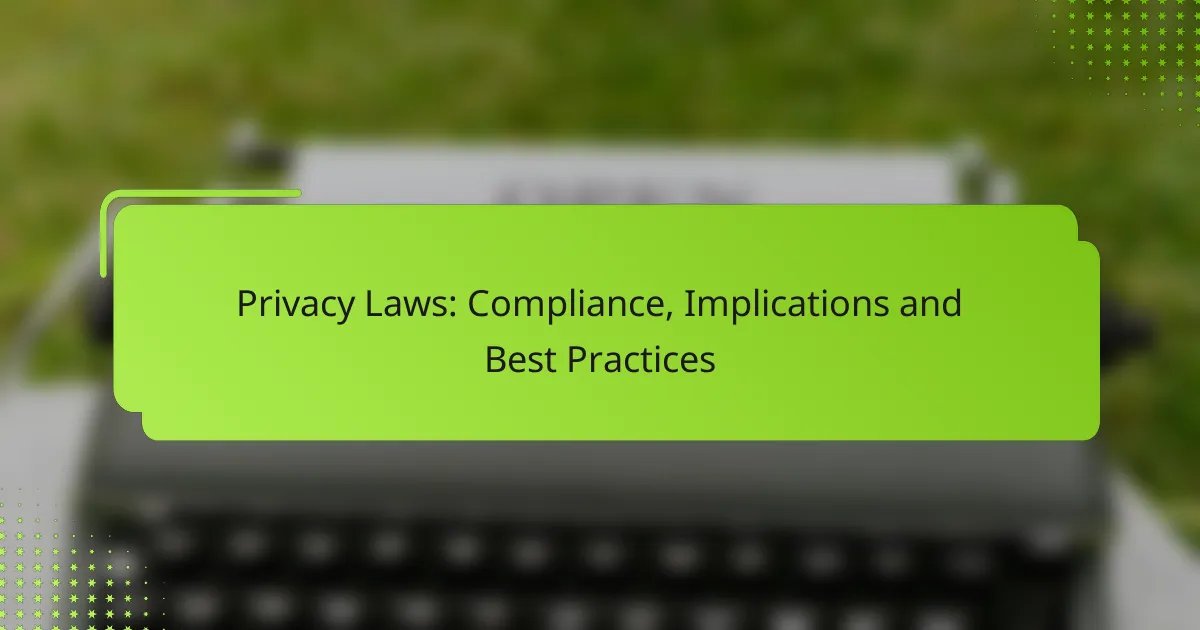Legal risks in distribution present significant challenges that can result in financial losses and reputational damage if not effectively managed. By implementing strategic measures such as strong contracts, compliance audits, and staff training, businesses can mitigate these risks and navigate the complexities of distribution agreements. Establishing clear expectations within these agreements is crucial for minimizing conflicts and fostering collaboration between parties.

What are the legal risks in distribution?
Legal risks in distribution encompass various liabilities and compliance challenges that can arise during the process of delivering goods or services. These risks can lead to significant financial losses, legal disputes, and damage to reputation if not properly managed.
Contractual liabilities
Contractual liabilities arise when parties fail to meet the terms outlined in distribution agreements. This can include breaches of contract, such as failing to deliver products on time or not adhering to quality standards.
To mitigate these risks, ensure that contracts are clear, comprehensive, and include specific performance metrics. Regularly review and update contracts to reflect changes in business practices or regulations.
Regulatory compliance issues
Regulatory compliance issues involve adhering to laws and regulations governing distribution practices. This includes local, national, and international laws that dictate how products can be marketed, sold, and delivered.
Companies should stay informed about relevant regulations, such as the Federal Trade Commission (FTC) guidelines in the U.S. or the General Data Protection Regulation (GDPR) in Europe. Conducting regular compliance audits can help identify potential risks before they escalate.
Intellectual property infringements
Intellectual property infringements occur when distribution practices violate copyrights, trademarks, or patents. This can happen if products are sold without proper licensing or if branding is misused.
To avoid these issues, conduct thorough due diligence on all products and brands before distribution. Implement training for employees on intellectual property rights to ensure compliance and reduce the risk of infringement.
Product liability claims
Product liability claims arise when consumers are harmed by defective products. Distributors can be held liable for injuries or damages caused by products they distribute, even if they did not manufacture them.
To minimize exposure to product liability claims, maintain rigorous quality control processes and keep detailed records of product sourcing and testing. Consider obtaining product liability insurance to protect against potential claims.
Consumer protection violations
Consumer protection violations involve failing to adhere to laws designed to protect consumers from unfair business practices. This includes misleading advertising, false claims, or inadequate product information.
To comply with consumer protection laws, ensure that all marketing materials are accurate and transparent. Regularly review advertising practices and train staff on compliance to avoid potential legal repercussions.

How can businesses mitigate distribution risks?
Businesses can mitigate distribution risks by implementing strategic measures that address potential legal challenges. This involves creating strong contracts, conducting regular compliance audits, training staff, securing appropriate insurance, and engaging legal counsel to navigate complex regulations.
Implementing robust contracts
Robust contracts are essential for defining the terms and conditions of distribution agreements. These contracts should clearly outline responsibilities, delivery timelines, payment terms, and dispute resolution processes. Including specific clauses that address potential risks can protect businesses from unforeseen liabilities.
Consider incorporating performance metrics and penalties for non-compliance to ensure accountability. Regularly reviewing and updating contracts to reflect changes in laws or business practices can further strengthen these agreements.
Regular compliance audits
Conducting regular compliance audits helps businesses identify and rectify potential legal issues before they escalate. These audits should assess adherence to industry regulations, contractual obligations, and internal policies. A systematic approach to auditing can uncover gaps in compliance that may expose the business to legal risks.
Establishing a schedule for audits, such as quarterly or bi-annually, can ensure ongoing compliance. Engaging third-party auditors can provide an objective perspective and enhance the credibility of the audit process.
Training staff on legal standards
Training staff on legal standards is crucial for minimizing distribution risks. Employees should be well-versed in relevant laws, regulations, and company policies that govern distribution practices. Regular training sessions can help reinforce the importance of compliance and empower staff to make informed decisions.
Utilizing case studies and real-world examples during training can enhance understanding and retention. Consider implementing an ongoing training program that includes updates on changes in laws or industry standards.
Insurance coverage options
Securing appropriate insurance coverage is a vital strategy for mitigating distribution risks. Businesses should explore various insurance options, such as general liability, product liability, and cargo insurance, to protect against potential claims and losses. Each type of insurance addresses different aspects of distribution risks.
Evaluating coverage limits and deductibles is essential to ensure adequate protection. Consulting with an insurance broker can help identify the most suitable policies based on the specific distribution model and risk profile of the business.
Engaging legal counsel
Engaging legal counsel is a proactive approach to managing distribution risks. Legal experts can provide valuable insights into compliance requirements, contract negotiations, and risk assessment. Having legal counsel involved in the distribution process can help identify potential legal issues before they arise.
Consider establishing a retainer agreement with a law firm that specializes in distribution law for ongoing support. Regular consultations can keep the business informed about changes in regulations and best practices, ensuring a robust legal framework for distribution activities.

What are the best practices for distribution agreements?
Best practices for distribution agreements focus on establishing clear expectations and minimizing legal risks. A well-structured agreement can help both parties understand their obligations, reduce conflicts, and enhance collaboration.
Clear terms and conditions
Clear terms and conditions are essential for any distribution agreement. They should specify the scope of distribution, pricing structures, payment terms, and delivery schedules. Ambiguities can lead to misunderstandings and disputes, so clarity is key.
For example, outline whether the distributor has exclusive rights in a territory or if multiple distributors can operate simultaneously. This clarity helps prevent market conflicts and ensures all parties are aligned on expectations.
Defined roles and responsibilities
Defining roles and responsibilities in a distribution agreement is crucial to avoid overlap and confusion. Each party should know their specific duties, such as marketing efforts, inventory management, and customer service obligations.
For instance, if the distributor is responsible for local marketing, the agreement should detail the expected marketing budget and strategies. This ensures accountability and helps track performance against agreed-upon metrics.
Dispute resolution mechanisms
Incorporating dispute resolution mechanisms in a distribution agreement can save time and resources. Options may include mediation, arbitration, or litigation, depending on the nature of the dispute and the preferences of the parties involved.
It’s advisable to specify the governing law and jurisdiction for disputes, as this can influence the resolution process. For example, parties operating in the European Union may choose to adhere to EU regulations for commercial disputes.
Termination clauses
Termination clauses outline the conditions under which either party can end the agreement. These clauses should specify notice periods, grounds for termination, and any obligations that survive termination, such as confidentiality or payment of outstanding debts.
Including a clear termination process helps prevent abrupt endings that could disrupt business operations. For example, a 30-day notice period allows both parties to prepare for the transition.
Confidentiality agreements
Confidentiality agreements protect sensitive information shared during the distribution relationship. These agreements should define what constitutes confidential information and the obligations of both parties to protect it.
For instance, if a distributor gains access to proprietary pricing strategies, the confidentiality clause should specify how long the information must remain confidential and the consequences of any breaches. This protection is vital for maintaining competitive advantages in the market.

What role does technology play in risk management?
Technology plays a crucial role in risk management by automating processes, enhancing data analysis, and improving transparency. By leveraging advanced tools, organizations can identify, assess, and mitigate risks more effectively, ensuring compliance and reducing potential liabilities.
Automation of compliance processes
Automating compliance processes streamlines operations and reduces the risk of human error. Tools like compliance management software can help organizations track regulations, manage documentation, and ensure adherence to legal standards without manual intervention.
For example, companies can use automated alerts to notify relevant teams of regulatory changes, allowing them to respond promptly. This proactive approach minimizes the risk of non-compliance penalties, which can be significant, often reaching thousands of dollars per violation.
Data analytics for risk assessment
Data analytics enhances risk assessment by providing insights into potential vulnerabilities and trends. Organizations can analyze historical data to identify patterns that may indicate future risks, enabling them to take preventive measures.
Utilizing predictive analytics tools, businesses can evaluate various scenarios and their potential impacts, helping to prioritize risk management efforts. For instance, companies in the financial sector often assess credit risk through data modeling, which can significantly reduce default rates.
Blockchain for transparency
Blockchain technology offers increased transparency and security in risk management by providing an immutable record of transactions. This decentralized ledger allows all parties involved to access the same information, reducing the chances of fraud and enhancing trust.
For example, in supply chain management, blockchain can track the provenance of goods, ensuring compliance with regulations and reducing liability associated with counterfeit products. Companies adopting blockchain can also streamline audits, as all transactions are readily verifiable.
Digital contract management systems
Digital contract management systems simplify the creation, storage, and tracking of contracts, reducing the risk of disputes and non-compliance. These systems often include features like automated reminders for contract renewals and compliance checks, ensuring that obligations are met on time.
Implementing such systems can lead to significant time savings, as organizations can quickly search for and retrieve contracts without sifting through physical documents. Additionally, digital contracts can be integrated with other technologies, such as e-signatures, to facilitate faster execution and reduce delays.

How do international laws affect distribution?
International laws significantly impact distribution by establishing regulations that govern trade, tariffs, and compliance requirements across borders. Companies must navigate these legal frameworks to avoid penalties and ensure smooth operations in various markets.
Understanding Trade Regulations
Trade regulations dictate how goods can be imported and exported between countries. These laws can include tariffs, quotas, and licensing requirements, which vary widely by region. For example, the European Union has strict regulations regarding product safety and environmental standards that must be met before goods can enter its market.
Companies should familiarize themselves with the specific trade regulations of each country they operate in. Ignoring these rules can lead to costly fines or delays in distribution.
Compliance with Local Laws
Compliance with local laws is crucial for successful distribution. Each country may have unique legal requirements concerning labor, environmental practices, and consumer protection. For instance, the U.S. has regulations like the Fair Labor Standards Act that affect how products are manufactured and distributed.
Businesses should conduct thorough research or consult legal experts to ensure adherence to local laws. This proactive approach can prevent legal disputes and enhance brand reputation.
Mitigating Legal Risks
To mitigate legal risks in distribution, companies should implement robust compliance programs. This includes regular audits, employee training, and staying updated on changes in international laws. Establishing a clear chain of responsibility can also help in managing compliance effectively.
Additionally, consider using technology for tracking compliance and maintaining documentation. This can streamline processes and reduce the likelihood of errors that could lead to legal issues.



